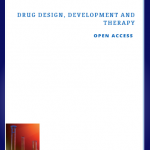Peter Fisher
Homeopathy, hormesis, nanoparticles and nanostructures
Homeopathy, 2015, 104 (2), 67-68

This issue of Homeopathy is an ambitious attempt to bring together emerging concepts in biological, toxicological, medical and materials science which have important implications for the theoretical basis of homeopathy.HormesisWe start with a series of papers from Prof Edward Calabrese of the University of Massachusetts, who gives a masterly overview of the field in three papers on principles and applications, history and mechanisms of hormesis. In fact hormesis is not new, nor is its relationship to homeopathy new, although it is often known by its name in a former incarnation: the Arndt-Schulz law. Calabrese's first paper reviews the principles and applications of hormesis: the paradoxical beneficial or stimulatory effect of low doses of toxins, with a U or J shaped dose response as opposed to the conventional sigmoid, S shaped curve assumed in conventional pharmacology. As Calabrese points, large-scale data shows hormetic dose response curves are more common than sigmoid. This is very challenging to the toxicology and regulatory community since it has major implications for assessment of toxicological and environmental risk.Some readers may be surprised by the statement, in his paper on the historical foundations of hormesis that ‘the historical dispute between homeopathy and traditional medicine has long since subsided’. Finally in his paper on mechanisms, Calabrese points out that although many specific mechanisms of hormesis involving different receptor/signalling pathways have been documented, the quantitative features of the hormetic dose response are independent of mechanism.







